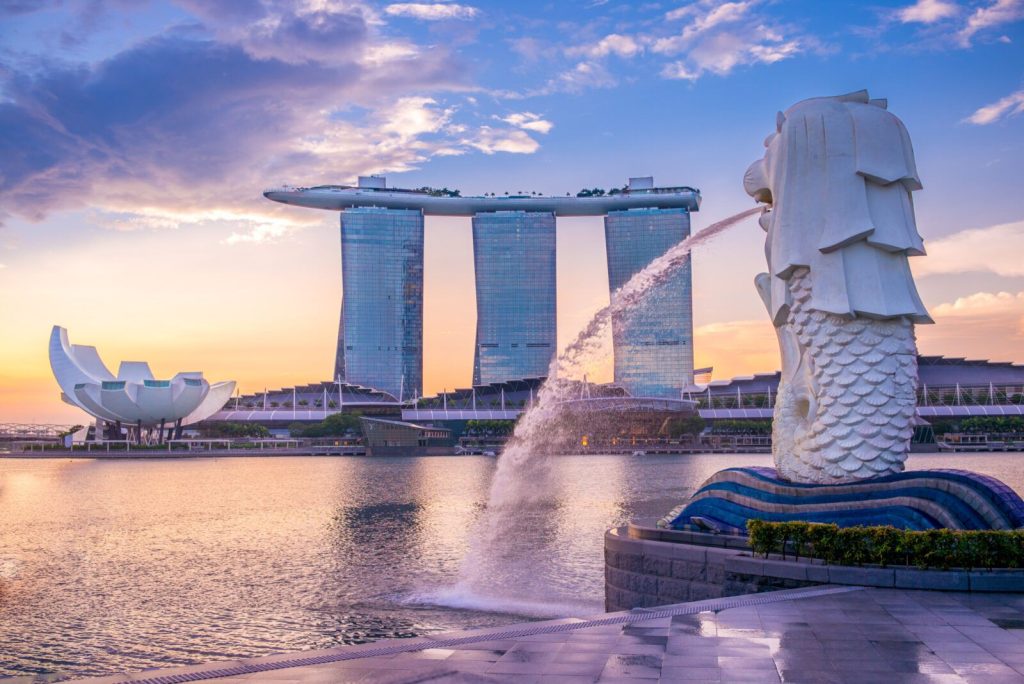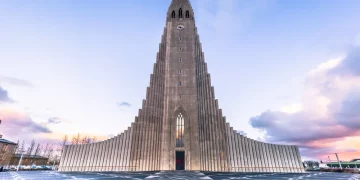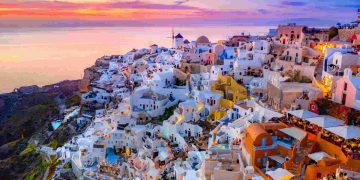Singapore is one of the most vibrant and dynamic cities in the world, known for its unique ability to blend the old with the new. This island nation has emerged as a global financial hub with modern skyscrapers, cutting-edge technology, and world-class infrastructure, yet it has also preserved its cultural heritage through historic neighborhoods, traditional practices, and cultural landmarks. Singapore’s ability to seamlessly merge modernity and tradition is one of the reasons why it captivates millions of visitors each year. In this article, we will explore how Singapore achieves this remarkable fusion and how its traditional charm coexists harmoniously with its contemporary developments.
1. Architectural Harmony: The Skyline and Historical Buildings
Singapore’s skyline is iconic, with soaring skyscrapers, ultra-modern architecture, and innovative urban designs. However, alongside these towering structures, the city has retained and integrated historic buildings, creating a beautiful contrast between the modern and the traditional.
- Modern Skyscrapers and Buildings: The Marina Bay Sands, with its futuristic design, is one of Singapore’s most famous landmarks. This luxury resort is an example of how the city has embraced modern architecture. Other contemporary masterpieces include the Esplanade – Theatres on the Bay and the Gardens by the Bay, both representing the city’s commitment to innovative design and sustainable urban development.
- Historical Preservation: Despite its modern growth, Singapore has made an effort to preserve its cultural heritage. The city’s historic districts, such as Chinatown, Kampong Glam, and Little India, maintain traditional shophouses, temples, and mosques that date back to the colonial era. These historical areas are protected by the government to ensure their continued existence amidst the rapid urbanization.
- Heritage Conservation in the Heart of the City: One notable example of Singapore’s success in blending the old and the new is the Chijmes, a former convent that has been converted into a trendy dining and entertainment space while retaining its historical architecture. Similarly, the National Gallery Singapore has been created by merging two iconic historical buildings, the former Supreme Court and City Hall, with modern additions.
2. Cultural Fusion: A Melting Pot of Traditions
Singapore’s cultural landscape is a reflection of its diverse population. The city is a melting pot of Chinese, Malay, Indian, and Western influences, creating a unique cultural fusion that is evident in its daily life, festivals, cuisine, and art.
- Cultural Celebrations: Singapore is home to numerous festivals that celebrate its ethnic diversity. The Chinese New Year, Hari Raya Puasa, Deepavali, and Christmas are just some of the key celebrations that are observed with traditional customs, parades, and street decorations. For example, during Chinese New Year, the Chinatown district is transformed with lanterns and decorations, while the streets come alive with lion dances, offering a wonderful fusion of cultural vibrancy and community spirit.
- The Blend of Culinary Traditions: Singapore’s food scene is perhaps the most tangible example of its blend of modern and traditional influences. The city is famous for its hawker centers, where traditional dishes such as Hainanese chicken rice, laksa, satay, and chili crab are served alongside international cuisine. The food culture in Singapore celebrates both the old and the new, with traditional recipes passed down through generations and innovative takes on beloved dishes.
- Multicultural Neighborhoods: Exploring neighborhoods like Chinatown, Kampong Glam, and Little India allows visitors to step back in time and experience the traditional elements of Singapore’s cultural heritage. At the same time, modern art galleries, chic cafes, and boutique shops have sprouted up in these same areas, creating a blend of contemporary culture and old-world charm.
3. Technology and Innovation with a Nod to Tradition
Singapore has always been at the forefront of technological advancement and innovation. The city-state is known for its smart city initiatives, cutting-edge infrastructure, and commitment to sustainability. However, despite embracing technology, Singapore continues to honor its traditional values through its practices and the preservation of its history.
- Smart City Development: Singapore’s Smart Nation initiative aims to make the city more connected, efficient, and sustainable through technology. Initiatives such as self-driving buses, digital payment systems, and smart traffic management systems are just a few examples of how the city is integrating technology into daily life. Yet, despite these modern developments, Singapore ensures that its technological progress does not erase its cultural identity or historical roots.
- Sustainability and Green Spaces: The government has placed a strong emphasis on sustainability, and projects like the Gardens by the Bay are prime examples of blending technology with nature. The futuristic Supertree Grove not only serves as an eye-catching feature but also functions as an environmentally friendly system that collects rainwater and generates solar power. This fusion of innovation and nature allows Singapore to embrace the future while preserving green spaces and sustainable practices that align with traditional values of harmony with the environment.
- Preserving Tradition Through Innovation: Traditional arts and crafts in Singapore are also being preserved through technology. The Singapore Heritage Board has made efforts to digitize cultural archives, including oral histories and traditional practices, making them more accessible for future generations while embracing new media formats like virtual tours and digital exhibitions.

4. Singapore’s Parks and Gardens: Modernity Meets Tradition in Nature
Singapore is known for its lush green spaces and gardens, which are integral to its identity as a “City in a Garden.” These gardens, which are often designed with a combination of modern landscaping techniques and traditional Asian garden aesthetics, offer a beautiful example of how nature, tradition, and modernity can coexist.
- Botanic Gardens: The Singapore Botanic Gardens, a UNESCO World Heritage Site, is a key example of how the city has managed to preserve its natural heritage while integrating modernity. The Gardens are home to both colonial-era plants and state-of-the-art horticultural techniques. Visitors can experience traditional garden designs while also exploring contemporary conservation efforts, such as the development of a Rainforest exhibit and the National Orchid Garden, which showcases modern plant breeding techniques.
- Gardens by the Bay: This futuristic garden located in the heart of Singapore offers a unique contrast to the traditional gardens. The Supertree Grove and the Flower Dome are modern architectural marvels that integrate technology with nature. However, the Heritage Gardens within the park pay homage to Singapore’s traditional cultural heritage, displaying plants and designs from Singapore’s Malay, Chinese, Indian, and Colonial influences.
5. Traditional Arts in a Modern World
While Singapore is known for its cutting-edge technology and urbanization, it has also nurtured a thriving arts and cultural scene that honors traditional practices while encouraging modern creativity.
- Performing Arts: The Esplanade – Theatres on the Bay is a prime example of how Singapore combines modern architecture with traditional performing arts. The venue hosts a variety of performances, including traditional Chinese opera, Malay dances, and Indian classical music, alongside contemporary productions. The city also hosts numerous international art festivals that showcase both modern and traditional performances.
- Traditional Crafts and Contemporary Art: Singapore’s local art scene is also a blend of old and new. Traditional crafts such as Chinese calligraphy, batik painting, and Malay woodwork have been revived by local artists who reinterpret these art forms in modern ways. For example, the Singapore Art Museum showcases both contemporary art and exhibitions that highlight the country’s traditional artistic heritage.
Conclusion
Singapore is a city that thrives on its ability to harmonize the old with the new, the traditional with the modern. This fusion is reflected in its architecture, cultural heritage, food scene, technological advancements, and natural spaces. The city has successfully embraced innovation while respecting and preserving its history and traditions, creating a unique environment that offers the best of both worlds. Whether you’re admiring the skyline from Marina Bay Sands or wandering through Chinatown, Singapore stands as a testament to the beauty of balancing modernity with tradition, making it one of the most fascinating and dynamic destinations in the world.





















